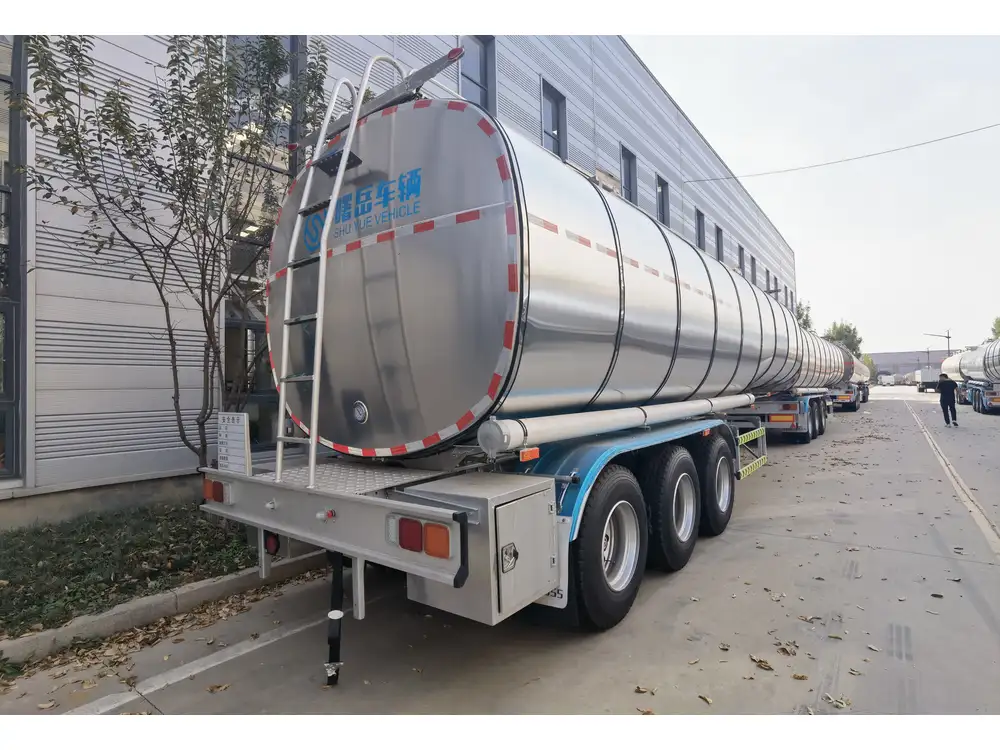In the realm of transportation, especially in the freight and logistics sectors, understanding the operational capacity of semi-trailers is crucial for effective fleet management. A frequent question that arises among drivers, fleet owners, and logistics coordinators is: how many gallons of gas does a semi hold? This inquiry leads to discussions not just about fuel capacity, but also the implications it has for efficiency, cost management, and operational performance.
How Fuel Capacity Affects Semi-Trailer Operation
Fuel capacity is a fundamental aspect of any semi-trailer operation. The average semi-trailer typically holds between 100 to 300 gallons of diesel fuel, depending on several factors, including the make, model, and configuration of the vehicle. Understanding these variances is essential for optimizing routes, managing fuel costs, and ensuring that drivers can cover significant distances without frequent stops for refueling.
Factors Influencing Fuel Capacity

1. Type and Model of Semi-Trailer
- Conventional Trucks: Most conventional semi-trucks feature larger tanks due to longer hauls. They may have capacities closer to the upper limit, sometimes exceeding 300 gallons.
- Day Cab vs. Sleeper Cab: Trucks equipped with sleeper cabs often have more space allocated for fuel tanks compared to day cabs, which are not designed for long overnight trips.
2. Tank Configurations
- Single Tank vs. Dual Tanks: Many semi-trailers come with dual-tank configurations, allowing for a larger cumulative space. This setup is advantageous for long-haul routes where stopping for fuel can be time-consuming.
3. Regulatory Considerations
- Some regions have regulations dictating the maximum allowable fuel tank size for commercial vehicles, impacting what manufacturers design.

Practical Implications of Fuel Capacity
When considering how many gallons of gas a semi holds, it’s pertinent to explore the implications of this value on logistics:
Range and Efficiency:
- A semi-truck with a 250-gallon tank may yield a range of approximately 1,500 miles or more, assuming an average fuel economy of six miles per gallon. This could potentially minimize the number of refueling stops.
Cost Efficiency:
- With today’s fluctuating fuel prices, having a larger fuel capacity means potentially purchasing fuel at a lower price point when prices dip, rather than refueling frequently during price spikes.
Environmental Considerations:
- Fleet operators increasingly focus on fuel efficiency and sustainability. Understanding the fuel capacity aids in shifting strategies towards more eco-friendly options while balancing operational efficiency.
Estimating Costs Based on Fuel Capacity
Breakdown of Fuel Costs
To provide a comprehensive understanding, let’s extrapolate some parameters assuming typical fuel prices. The current average fuel price for diesel is approximately $4.00 per gallon. Below is a table illustrating projected costs based on a semi-trailer’s fuel capacity:
| Fuel Tank Capacity (Gallons) | Cost to Fill (at $4.00/gallon) | Estimated Range at 6 MPG | Total Distance ($4.00/gallon) |
|---|---|---|---|
| 100 | $400 | 600 miles | 1,200 miles |
| 150 | $600 | 900 miles | 1,800 miles |
| 200 | $800 | 1,200 miles | 2,400 miles |
| 250 | $1,000 | 1,500 miles | 3,000 miles |
| 300 | $1,200 | 1,800 miles | 3,600 miles |

Fuel Efficiency Strategies
For optimal financial management, fleet operators should consider implementing strategies to improve fuel efficiency based on their semi-trailer’s fuel capacity:
- Regular Maintenance: Ensuring that engines are well-maintained can substantially improve fuel efficiency.
- Route Optimization: Using GPS and route-planning software minimizes downtime and fuel consumption.
- Driver Training: Educating drivers about fuel-efficient driving habits can lead to improved MPG and lower overall fuel costs.
Considerations for Different Loads
Another critical factor when analyzing semi-trailer fuel capacities is the impact of cargo load. The weight and type of cargo can significantly affect fuel consumption.
Weight Influence on Fuel Efficiency
As a general rule, heavier loads consume more fuel. The following table illustrates how load weight can impact fuel efficiency:
| Cargo Weight (lbs) | Fuel Consumption (MPG) | Distance on Full Tank (250 gallons) |
|---|---|---|
| 20,000 | 6 MPG | 1,500 miles |
| 30,000 | 5 MPG | 1,250 miles |
| 40,000 | 4 MPG | 1,000 miles |
| 50,000 | 3 MPG | 750 miles |

Future Trends in Fuel Capacity and Technology
The trucking industry is undergoing rapid transformation, spurred by technological advancements and the urgent need for sustainability. Here’s a look at emerging trends that could impact semi-trailer fuel capacities:
Alternative Fuels: With the rise of biodiesel, natural gas, and electric vehicles, the traditional diesel fuel capacity in semi-trailers may evolve. While diesel remains predominant, alternative fuels offer intriguing possibilities for reduced operational costs and improved environmental impact.
Telemetry and Analytics: Modern semi-trailers equipped with IoT devices provide real-time data regarding fuel consumption and efficiency. By analyzing patterns, fleet managers can make informed decisions about fuel usage and tank size for their specific operational routes.
Enhanced Aerodynamics: Improved truck designs focus on minimizing drag, which can lead to better fuel economy, potentially allowing operators to make the most of semi-trailer fuel capacity while reducing operational costs.
Legislative Changes: As governments enforce more stringent fuel economy standards, semi-trailer designs and capacities may change to meet these regulations, influencing the size and efficiency of fuel tanks.
Conclusion: Making Informed Decisions
Understanding how many gallons of gas a semi holds is more than just a matter of knowing the numbers; it’s about making informed decisions that affect operational costs, efficiency, and sustainability. Fleet owners and operators must consider various factors, including vehicle type, load weight, fuel costs, and future trends that could impact fuel capacity decisions.
In this industry, knowledge is power—equipping yourself with accurate, detailed information not only boosts operational efficiency but also positions your fleet at the forefront of the ever-evolving landscape of transportation. By judiciously managing fuel capacity and exploring innovative strategies, semi-trailer operations can remain both competitive and sustainable, ultimately driving profitability in a challenging market.



